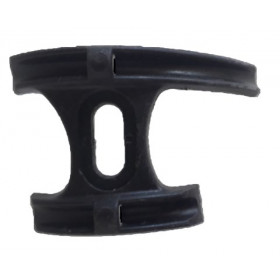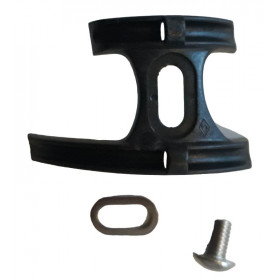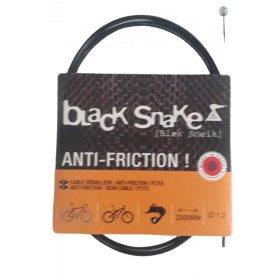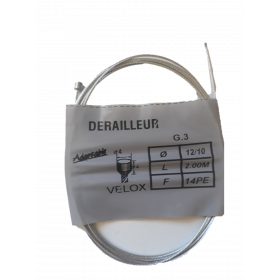-
 New productCables guide for fixture by 1 screw under the bottom bracket
New productCables guide for fixture by 1 screw under the bottom bracket- €2.99
-
 New product -75%Campagnolo cables guide
New product -75%Campagnolo cables guide- €1.12
- €4.49
-
 New product -50%Anti-friction derailleur cable Black Snake 2.3 m
New product -50%Anti-friction derailleur cable Black Snake 2.3 m- €3.50
- €7.00
-
 New product -48%Brakes cables and outer casing for road bike PTFE Shimano
New product -48%Brakes cables and outer casing for road bike PTFE Shimano- €22.87
- €43.99
-
 New productVelox derailleur cable
New productVelox derailleur cable- €1.49
Showing 1-5 of 5 item(s)
The cables used in an XC mountain bike play a crucial role in the bike's transmission and braking system, as well as controlling certain features like suspension. Here are their main functions and characteristics:
Function :
1. Transmission of control force:
Cables are used to transmit the operating force from the shift lever or brake lever to the derailleur or brake calipers.
2. Activation of the suspension:
In some cases, particularly on XC mountain bikes equipped with manually adjustable suspensions, the cables are also used to operate the front and rear suspension locks or lock controls.
Features :
1. Material:
XC MTB cables are typically made from stainless steel to provide high tensile and abrasion resistance. Some higher quality cables may be coated with a layer of polymer to reduce friction and improve durability.
2. Diameter:
Cables are available in different diameters to suit the specifications of shifters, derailleurs and brakes. Proper diameter is essential to ensure proper operation and efficient transmission of control force.
3. Sheath:
Cables are typically inserted inside protective jackets, which provide protection against moisture, dirt and debris, while reducing friction for smoother operation. Ducts can be made of plastic or metal, and some are reinforced for added durability.
4. Compatibility:
It is important to choose cables that are compatible with specific XC mountain bike components, including shifters, derailleurs and brakes. Cables of appropriate quality and specification ensure optimal operation of the transmission and braking system.
5. Maintenance:
Cables should be inspected regularly for signs of wear, corrosion or damage. They may require periodic replacement to ensure optimal performance of the transmission and brake system.
